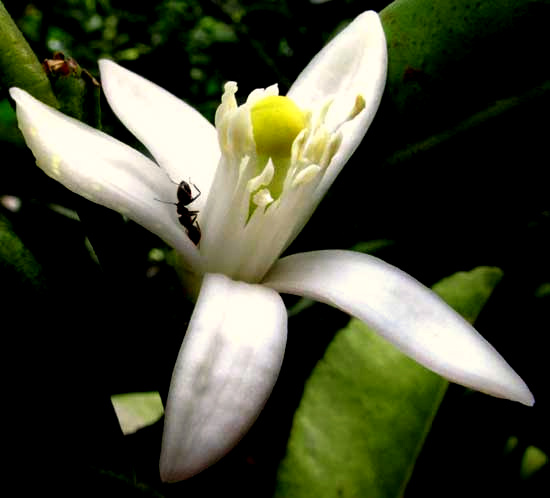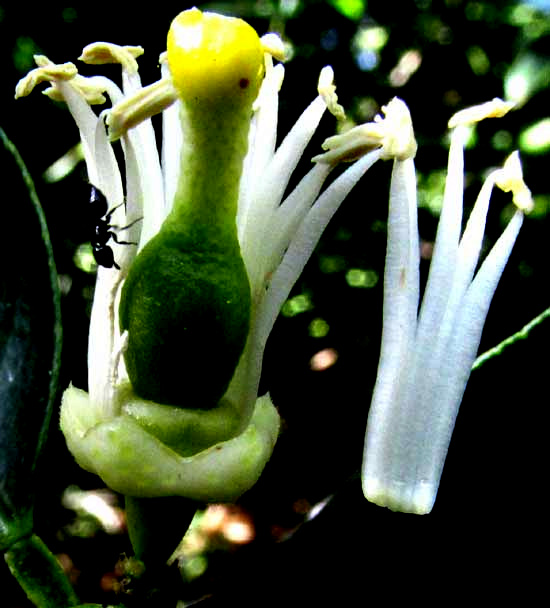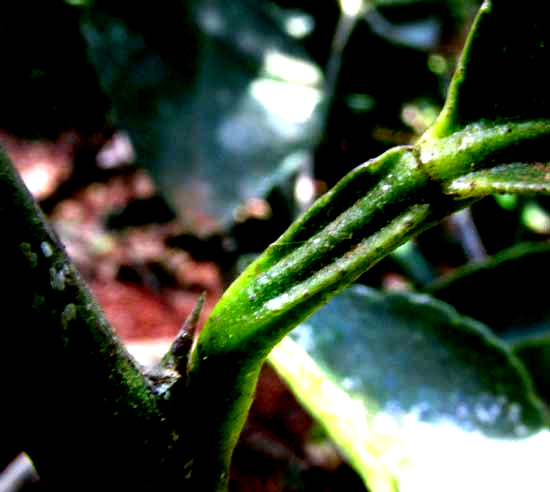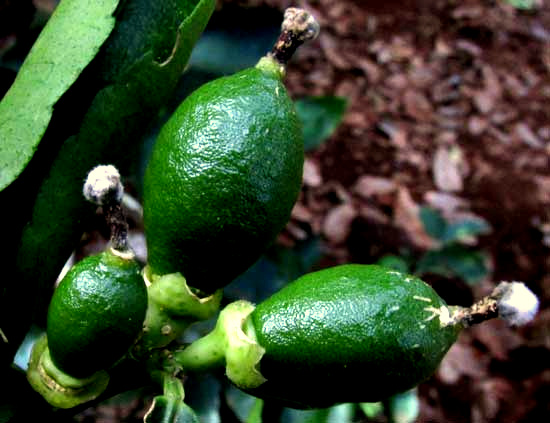Excerpts from Jim Conrad's
Naturalist Newsletter
from the January 29, 2017 Newsletter issued from Rancho Regenesis in the woods ±4kms west of Ek Balam Ruins; elevation ~40m (~130 ft), N20.876°, W88.170°; north-central Yucatán, MÉXICO
LIME FLOWERS
This week the last of our lime trees' flowers blossomed. Lime tree blossoms and leaves are a little smaller than those of the oranges, and Lime tree flowers have ovaries with styles and stigmas that keep lower down among the stamens than they do in orange flowers, as shown below:

A shot with some of the stamens pulled away and adhering to one another at their filaments' bases, is shown below:

Like the leaves of Sweet and Bitter Oranges, our Lime trees' leaves are jointed with their petioles. The Lime's petioles are fairly narrow, hardly "winged" at all. Below, you can see what I mean -- and notice the spine above the petiole's base:

Below, you can see what's become of flowers that have been pollinated and lost their corollas and stamens:

The immature fruits in that picture bear styles and stigmas that are withering away. Fungus appears to be growing on the stigmas.
The Wikipedia page for Lime fruits lists about fifteen species or taxa known as limes. That page is at https://en.wikipedia.org/wiki/Lime_(fruit)
Off all the possibilities mentioned on that page, this looks most like CITRUS x LIMETTA, which sometimes is considered just a cultivar of Citrus limon. Citrus limetta is native to South and Southeast Asia.
When you have an orchard like ours populated with several citrus species it can be hard to tell them apart. Our tree stands out with its smaller leaves and flowers, the very narrowly winged petioles, and the fruits being small, dense, and with a skin relatively smooth and shiny. Also, if you scrape an immature fruit with your fingernail, it smells a little like lime -- more like a hybrid smell between what Northerners think of as a lemon, and the lime fragrance.
Taxa known as limes often are highly hybridized and there are lots of cultivars, so maybe assigning a name like Citrus limetta is misleading. The name is useful, however, if you want to look it up.
Our Lime fruits -- which locals call limón even as they call lima trees producing what Northerners would think of as lemons -- are too acid to eat out of hand. However, their squeezed-out juice taste's pretty good in a glass of water, which is how I use the fruits.